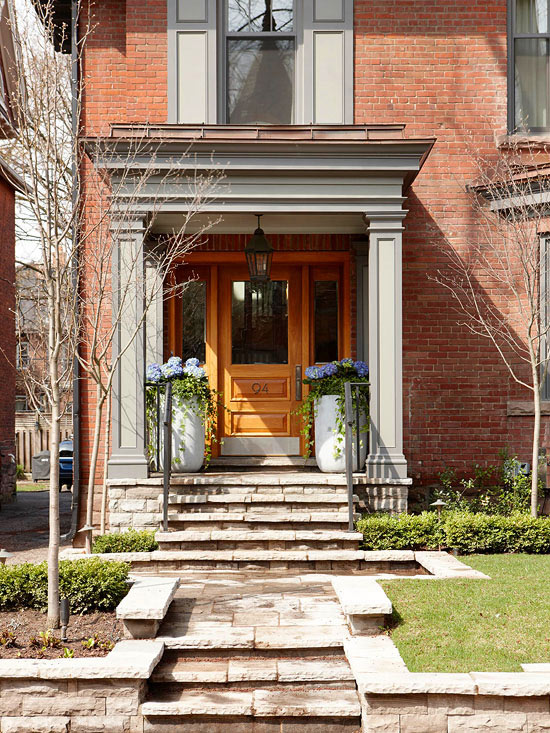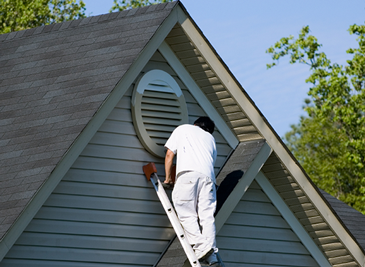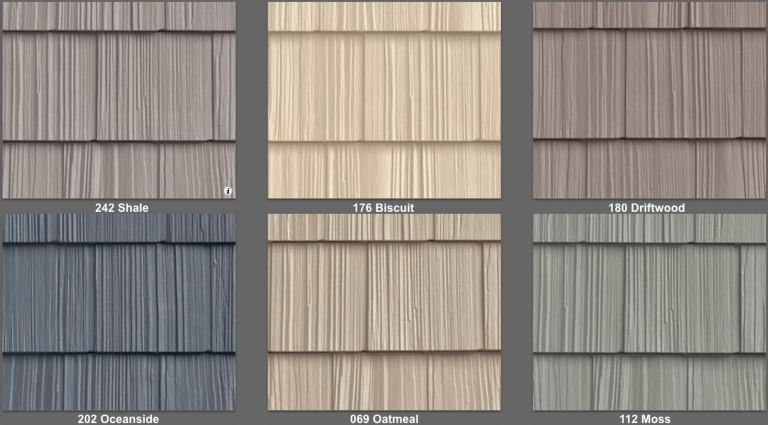Looking to improve the curb appeal of your home, increase its value, and protect it from the elements? Re-siding your home might be a wise choice.
Houselogic, the National Association of Realtors’ website, says that exterior projects are the best choices for improving home value. Re-siding a house can reduce energy costs, making it a smart investment. You don’t, however, see a particularly impressive cost-per-value ratio at the outset. The immediate return on your investment is usually around 80%. In other words, if you spend $10k to re-side your house, its immediate value, not considering lowered energy costs or long term savings on home repairs otherwise required without new siding, will increase by $8k.
The cost of re-siding a house ranges widely depending on the materials, with vinyl and metal siding costing between $7,000 and $14,000 for an average two-story house, and options like fiber-cement and wood costing nearly double.
Vinyl siding, introduced in the 1960s, is a popular choice because of its lower price range and virtually maintenance-free way of protecting your home’s envelope. The only regular upkeep required on vinyl siding is the occasional wash. Plan on spending about 15% more for vinyl siding backed with insulation. The color of vinyl siding (and there are more than 300 colors available) permeates the material, leaving it free of nicks or the need to paint for the life of the siding – generally 30 to 50 years. The better brands come with a lifetime warranty that is transferable. The material is lightweight, so it is easy and quick to install, thereby keeping labor costs at a minimum. Vinyl siding can also be retrofitted over existing siding. Its drawbacks include that it is not degradable and is prone to fading from UV light over time. Some modern incarnations of vinyl siding look like wood or other materials; therefore, if you want the more expensive appearance of wood without all the extra required costs of materials, installation, and maintenance, you can opt for vinyl shakes or shingles, which can be almost indistinguishable from wood. In addition to shakes, vinyl is also available in fish scales, lap, and beaded designs. If you’re handy, you could even try to install vinyl siding yourself, as it is widely available in home supply stores.
Like vinyl, metal siding’s color lasts, given that it is baked into the material, but can still be scratched off. Since vinyl emerged as the less expensive option in recent years, it simultaneously replaced metal in popularity. While only slightly more expensive than vinyl, metal siding will generally last considerably longer and is also recyclable.
Wood siding, while an attractive and sustainable option, must be either repainted every five years, restained every three, or resealed every two. Rotted wood siding should never be sided over – it needs to get pulled off and the wall behind it checked for damage, which could save you a boatload of money later on. Fiber-cement siding is similarly expensive, requiring specialized contractors and specific tools and techniques for installation, thus increasing labor costs. Retrofitting over fiber-cement can’t be done, so the old siding must be completely removed beforehand. However, this type of siding is often considered masonry, so it can reduce the cost of home insurance, depending on your carrier and plan.
Siding is vulnerable to leaks near windows and doors, so it important to maintain it – which can be done for as little as it costs to buy a container of caulk. This will save a lot of money in the long run by reducing the potential for loosening or cracking of panels.
Another way to revamp your existing vinyl siding without replacing it entirely is to paint it. Many homeowners are not aware of this viable option to give houses a completely fresh look as well as increase siding’s durability. While paint adhesion could be challenged by plasticizers in newer vinyl siding, these compounds are removed naturally by weather over time. Latex paints, or those specifically formulated to go over vinyl siding, will perform well without buckling. Previously, using a dark paint over lighter siding could cause the siding to buckle, but new technologies have allowed for better-quality paints, and Benjamin Moore, Sherwin Williams, and other reputed paint companies manufacture paints specifically designed to go over siding.
In order to paint vinyl siding, first make sure to buy the appropriate paint. Next, clean the siding thoroughly. If the siding was previously painting, some sanding may be required at the edges of the peeled paint. Normally, priming isn’t necessary unless the siding is porous.
Whether you choose to re-side your home or just give your old siding new life by painting it, your home’s value will increase as will your energy savings and curbside appeal. For additional information and a siding buying guide, go to consumerreports.com or Better Homes and Gardens’ website, bhg.com.

There are many types of siding to choose from, including brick siding, which is actually a veneer constructed onto the outside of the wood frame structure of your home. Photo courtesy of bhg.com

Painting over vinyl siding is a great option to give your home a new look, increase its value, and add extra durability. Photo courtesy of benjaminmoore.com
eugenie@theforumnewsgroup.com

